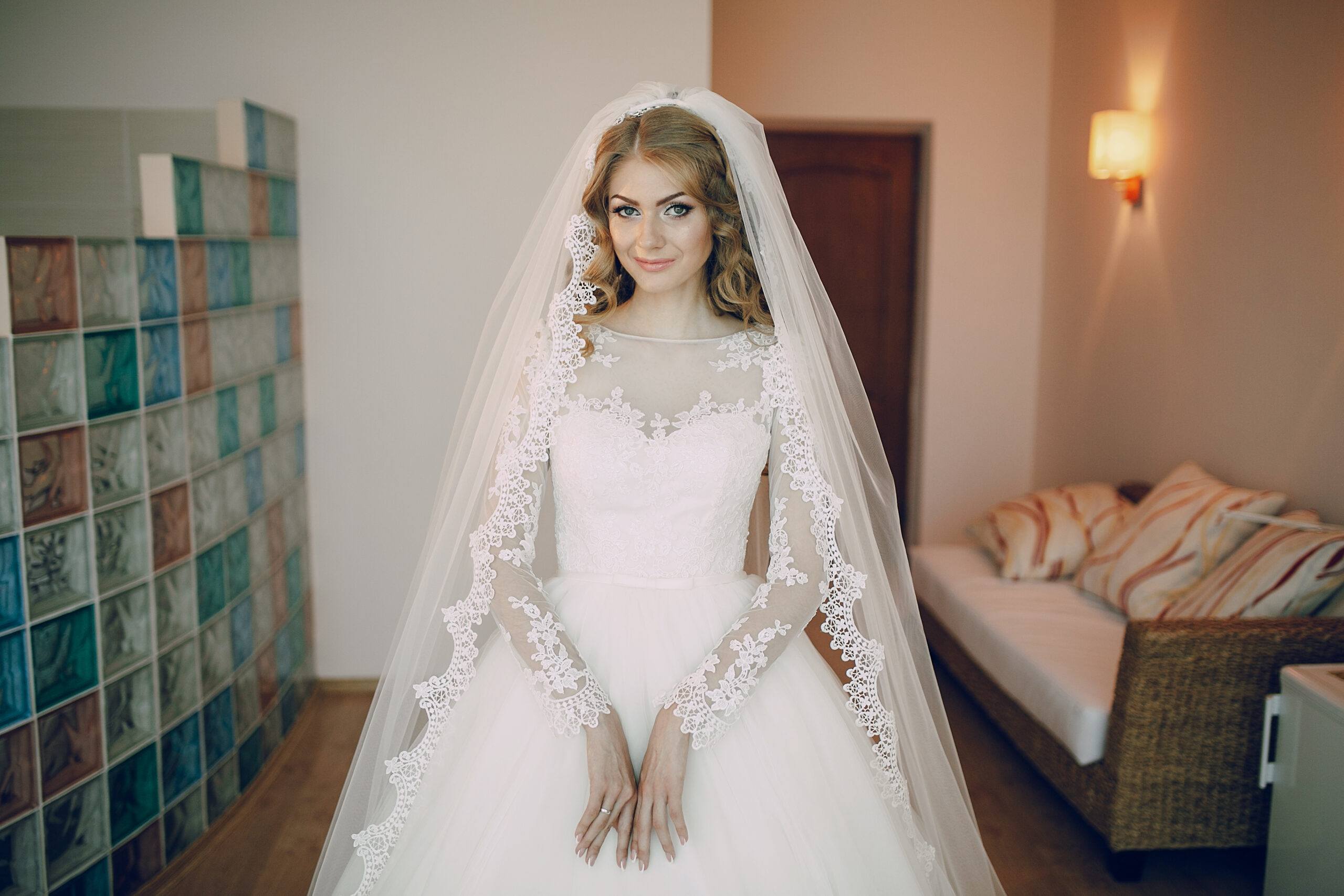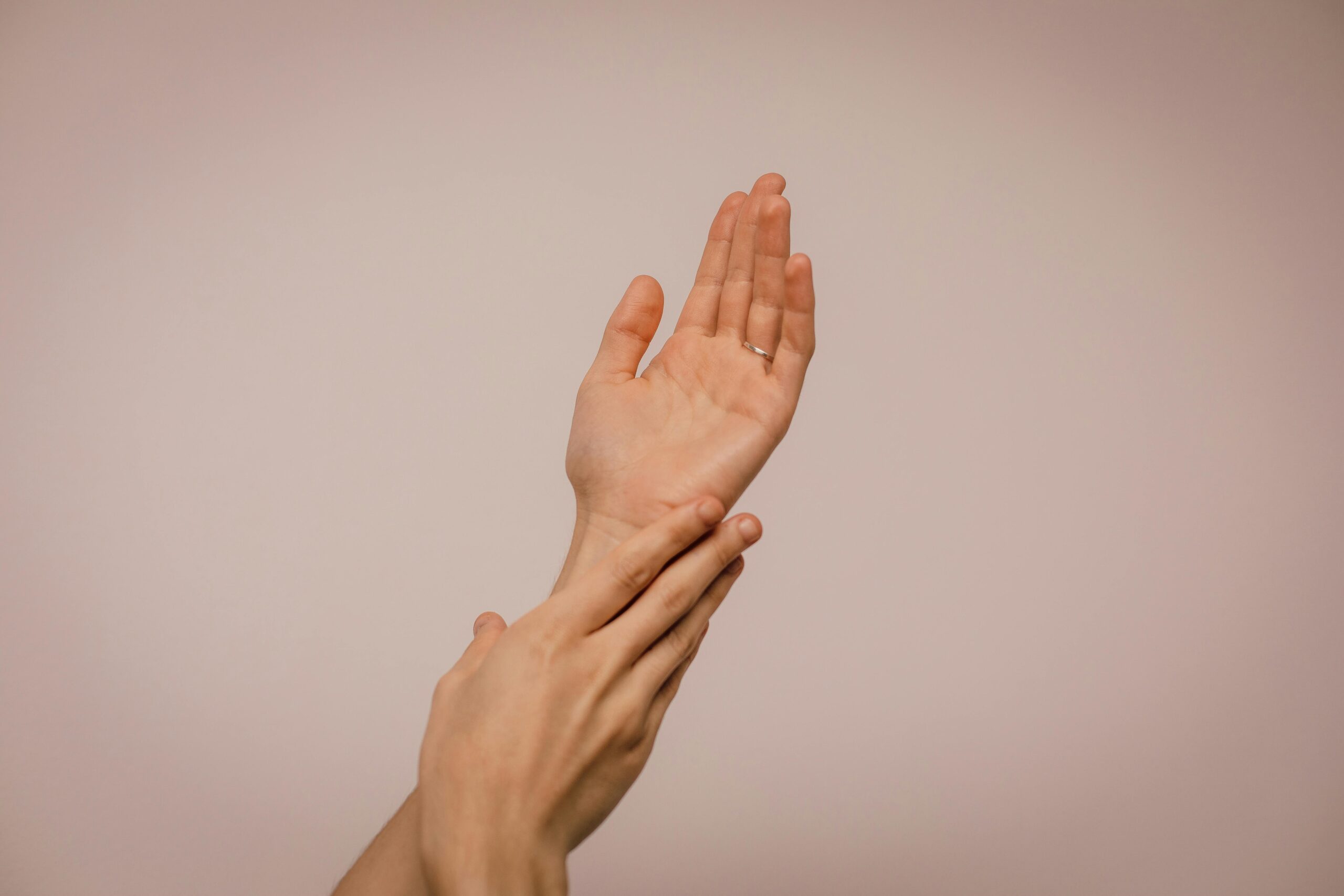A wedding veil holds the power to shape the entire bridal appearance, adding depth and elegance to the gown and hairstyle. Every style makes a unique impression and expresses individual preference, from short, fashionable options to sweeping, dramatic lengths.
The right choice does not simply cover the face or shoulders, it completes the bridal look and complements the theme of the occasion. Some brides are drawn to minimal and contemporary designs, while others favour lace details, soft layers or traditional length. This article outlines the different styles of wedding veils, offering a clear view of how each option can complete and elevate the bridal ensemble for a truly memorable occasion.
Short Wedding Veils
Short veils are simple, stylish, and easy to wear, including:
Birdcage Veil
The birdcage veil is a classic choice for brides seeking a retro look. Typically made from French netting, it covers part of the face and may extend to the chin. This style works particularly well with shorter dresses or tea-length gowns, bringing a touch of mid-20th-century glamour. Its simplicity makes it an attractive option for brides who want a stylish accessory without added weight or volume.
Bandeau Veil
The bandeau veil is understated yet refined. Made from a narrow piece of netting, it is secured on either side of the head and covers the eyes or nose. Unlike the birdcage, which curves around the face, the bandeau veil lies flatter, giving it a modern yet slightly theatrical feel. It pairs well with minimalist gowns and bold hairstyles, allowing brides to create a statement without excessive detailing.
Blusher Veil
The blusher is a single layer of tulle worn over the face at the start of the ceremony, often lifted by the groom before the vows are exchanged. This traditional element brings a sense of anticipation and intimacy to the moment. The length can vary from very short to waist level, making it adaptable to different gown styles. Brides often combine a blusher with another veil length to create a layered effect that shifts the look throughout the ceremony and reception.
Flyaway Veil
The flyaway veil is made up of several short tiers that sit just above the shoulders. It is light, airy, and easy to wear, making it suitable for outdoor weddings or receptions where comfort is important. The layered effect gives volume and movement, which can balance a gown with heavy embroidery or detailing. This style is practical yet lively, offering freedom of movement without sacrificing charm.
Medium-Length Wedding Veils
Here are some popular medium veils that balance simplicity with elegance and suit both formal and informal weddings.
Elbow-Length Veil
The elbow-length veil falls gracefully around the bride’s arms, creating a soft frame for the dress. It complements gowns with fitted bodices or full skirts, as the shorter length avoids interfering with the detail on the lower half of the dress. This style is particularly effective for brides who wish to wear a veil without committing to the formality of a longer option. It also works well with structured hairstyles and hair accessories, as the veil does not extend too far down the back.
Fingertip Veil
As the name suggests, this veil reaches the bride’s fingertips when her arms are relaxed by her side. It is one of the most popular styles because it suits almost every dress shape, from fitted silhouettes to flowing ballgowns.
The fingertip veil strikes a perfect middle ground, adding elegance without excessive drama. It allows the back of the gown to remain visible while still providing a sense of ceremony and sophistication. Brides often choose this length because it feels complete yet practical, offering both style and comfort throughout the day.
Long Wedding Veils
Long veils create a sense of ceremony and refinement, often chosen for traditional church weddings or grand venues. Their length provides drama and elegance, flowing behind the bride as she walks.
Chapel Veil
The chapel veil falls to the floor and usually extends slightly beyond the train of the gown. It is formal without being excessive, making it a popular choice for brides who want length without the weight of a cathedral veil. This style is often selected for semi-formal ceremonies, where it strikes a balance between grandeur and comfort. The chapel veil works particularly well with dresses that have subtle train detail, as it complements the gown without fully covering it.
Cathedral Veil
The cathedral veil is the longest and most striking of all options, trailing several feet behind the bride. It is often associated with regal ceremonies and dramatic entrances, making it ideal for cathedrals or large venues. Brides who wear this style usually pair it with gowns that feature long trains, as the veil extends beyond the dress to create a layered, sweeping effect.
However, the cathedral veil requires careful handling, often arranged by attendants before the bride walks down the aisle. Its length makes it best suited to formal weddings, where tradition and spectacle are key elements of the occasion.
Veils by Design and Detail
While length defines the main categories of veils, design features such as edging, fabric, and structure can completely alter the overall look. These styles bring individuality and cultural influence into bridal fashion.
Mantilla Veil
The mantilla veil is a Spanish-inspired style made from fine tulle or silk with a lace or embroidered edge. It is worn flat against the head with no gather, allowing the lace trim to frame the face and shoulders. This design adds softness and romance, often chosen by brides who wish to incorporate heritage or who prefer a more traditional appearance. The mantilla works beautifully with both simple gowns and elaborate dresses, as the lace detailing complements a wide range of fabrics and cuts.
Juliet Cap Veil
The Juliet cap veil takes its name from Shakespeare’s heroine and is a vintage-inspired design that became popular in the 1920s. It features a fitted cap that secures the veil close to the head, often made with lace or fine embroidery. This style is ideal for brides who want an old-world romantic feel, as it frames the face in a delicate yet striking way. The Juliet cap pairs well with dresses that have soft, flowing lines or antique detailing.
Drop Veil
The drop veil consists of a single layer of tulle draped over the head with the comb secured further back. It creates a sheer, lightweight effect that covers the face and shoulders without any gathering. This style is often chosen by brides seeking simplicity with a touch of tradition. It is easy to wear and suits a wide variety of dresses, making it a versatile choice for modern weddings.
Double-Tier Veil
The double-tier veil features two layers, often of different lengths, to add shape and dimension. Brides may wear the shorter tier as a blusher over the face before the ceremony, lifting it later to reveal the longer layer. This design works well for brides who want a traditional element combined with visual interest. The layered structure also complements dresses with long trains, adding volume and movement to the bridal look.
When brides plan to buy wedding veils, it is important to consider how design elements such as lace edging, cap styles, or layered fabrics affect the overall outfit. A carefully chosen veil can bring cohesion to the look, tying together hairstyle, gown, and ceremony setting in a way that feels both personal and refined.
FAQs
Should the veil match the colour of the wedding dress exactly?
Not always. While many brides choose a veil in the same shade as their gown, a subtle contrast can work well. Ivory gowns can look beautiful with slightly warmer tones, and a crisp white veil can brighten a softer cream dress.
Can a veil be worn with a non-traditional wedding dress?
Yes. Veils are not limited to classic gowns. They can complement jumpsuits, cocktail dresses, or even coloured bridal outfits, as long as the style and length are chosen to suit the overall look.
How do I keep my veil in place throughout the day?
Most veils are attached with combs or pins. For extra security, hairstylists often anchor the veil into an updo or braid. Using strong hairpins and light hairspray also helps prevent slipping.
How should I store my veil before the wedding day?
The veil should be kept in a garment bag or wrapped in acid-free tissue paper. Hanging it in a cool, dry space prevents creasing. Avoid folding it for long periods to protect the fabric.
Read also: The Top 5 Reasons Lawsuits Fail (and How to Avoid Them)
Can a veil be worn with a headpiece or tiara?
Yes. Many brides wear veils with crowns, tiaras, or hair vines. The veil is usually placed beneath the headpiece so that both are visible and sit comfortably together.


